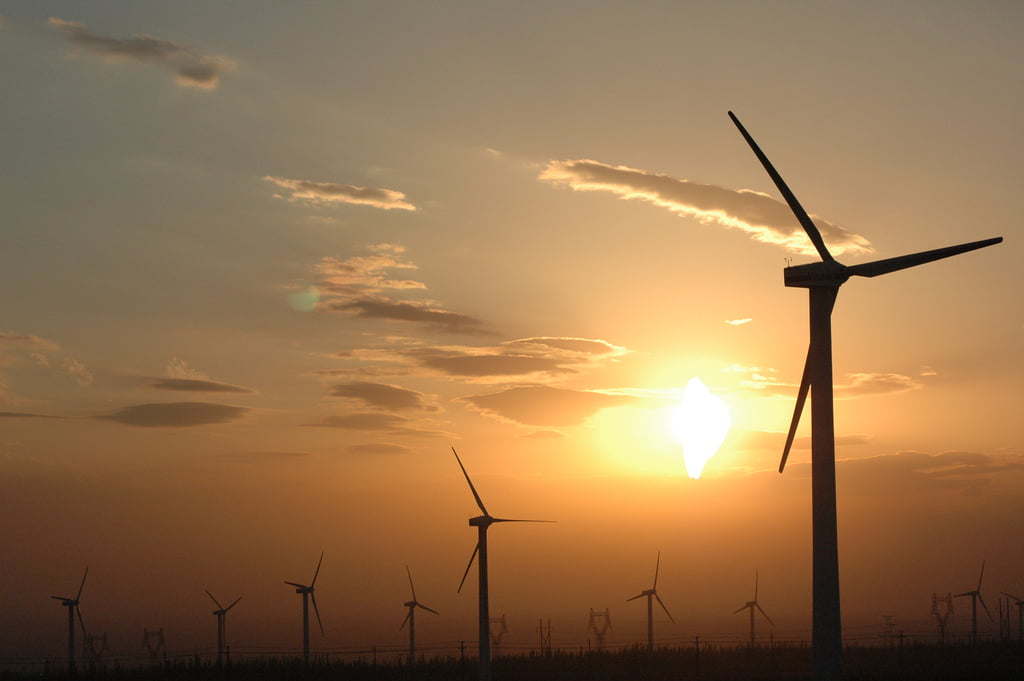In a year already characterized by global political uncertainty—and waning confidence in U.S. climate policy—China is posed to assume the role of world leader in all things climate diplomacy and clean-energy finance. The country is the largest emitter of greenhouse gases, leads the global economy in green finance, and is beginning to toy with the largest carbon market in the world. (The new Chinese market will be about twice the size of the EU emissions trading system.)
Now, with an eye on the future, Beijing will commit some serious new yuan to renewables. Last week, the country’s National Energy Administration announced in its Five-Year Plan on Energy Development to invest $361 billion in clean energy by 2020, a move it projects will help create 13 million jobs and bolster the country’s world domination in domestic clean-energy investment.
In 2015, China pumped $103 billion into its domestic renewable energy sector—around 36 percent of all new dollars invested in renewables globally that year (and more than twice the United States’ investment). Most of these dollars went to utility-scale projects, including 29 gigawatts of onshore wind capacity and 16 gigawatts of solar PV projects. 3.5 million of the world’s 8.1 million renewable energy jobs are in China.
Last week’s announcement also included a new goal of a 15-percent share of renewables in the country’s energy mix by 2020. As U.S. climate ambition threatens to wane, hitting this goal would offer much-needed confidence in global climate action—a movement necessarily stitched together by large economies’ efforts and investments.
Recent high-level signals have helped clarify Beijing’s clean energy and sustainability ambitions. Last year’s master Five-Year Plan saw the first introduction of a cap on energy consumption: 5 billion tons of standard coal equivalent for 2020. If China follows through on the vision laid out in the FYP, the World Resources Institute estimates the country will see a 48-percent reduction in its ratio of CO2 emissions to GDP by 2020, compared to 2005 levels. As part of its commitment to the Paris Agreement, by 2030, China has pledged to reduce this figure by 60–65 percent by 2030. Beijing has also begun to crack down on fossil-fuel subsidies, especially with respect to gas taxes.
Domestic efforts are only one side of the story, though: Much of the financial and political capital to be found in clean energy comes in the form of overseas investments. Last year, China invested more than $32 billion in green technology abroad—a 60-percent increase over the previous year, according to the Institute for Energy Economics and Financial Analysis. The investments included 11 deals over $1 billion. As is the case with its domestic investments, China leads the world in renewables spending abroad.
There are caveats to be had here. In 2015, China brought online around 40 gigawatts of coal and gas power. The country’s overseas spending in the renewables sector must be weighed against its investments in old-fashioned dirty energy, too. We live in a world of energy gaps, and much of China’s development finance in the energy sector has prioritized power generation and connecting people to a grid, regardless of the generating source.
As a result, the country invested at least $28 billion in global coal projects between 2007 and 2014. As Boston University professor Kevin Gallagher and colleagues wrote last year, “Chinese development banks are heavily exposed to climate and social risk. China’s energy loans are highly concentrated in fossil fuel extraction and power generation, especially coal.”
Domestically, too, China will still generate a good chunk of its electricity from coal for the foreseeable future. Installed capacity is never the same thing as energy mix, and as of last year, the country has committed to raising its renewable share to only 20 percent by 2030. (Last week’s 15-percent announcement provides a benchmark to hit along the way.) Given Beijing’s challenges with overcapacity and curtailment, realizing these targets will require more than just deep pockets. Bloomberg New Energy Finance predicts the country’s coal generation will peak around 2025. The energy Five-Year Plan set an energy-mix coal goal of 58 percent by 2020.
China’s role in the energy sector must always be understood in terms of its sheer size: Change comes slowly, but when it does, it is often titanic in scale. Whether Beijing can successfully decouple its emissions from economic growth at this stage in development remains an open question—but if its newly announced intentions are any indication, it’s safe to say it’s confident it can. And if the bets pay off, they’ll offer the kind of sustainable development success stories a world wishing to respond to a changing climate sorely needs.
